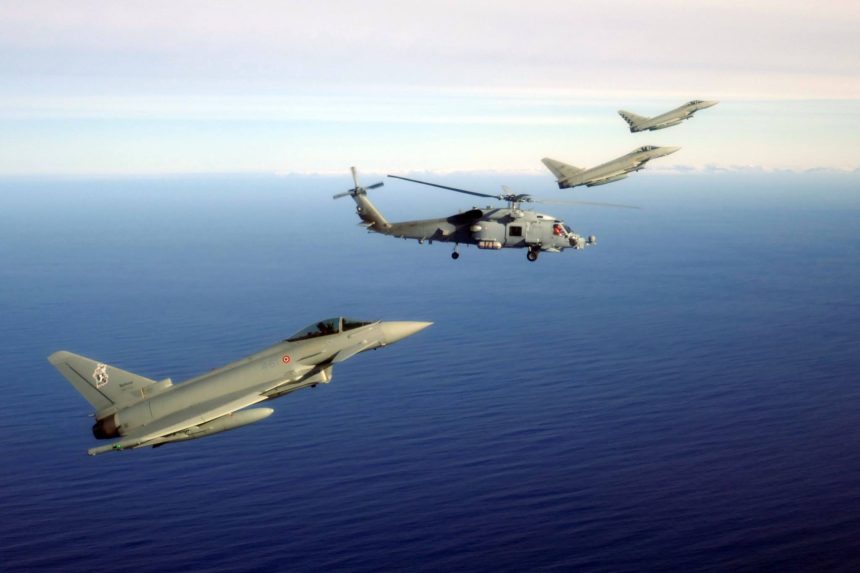When you have to escort a Slow Mover you may need to fly at high AOA (Angle Of Attack).
The following photo was shared on social media by the Royal Danish Air Force (RDAF). It shows a Danish Seahawk helicopter flying in formation with three Italian Air Force F-2000A Typhoon jets over the North Atlantic ocean: the MH-60R from Esk 723 (based at Karup) is embarked aboard the Royal Danish Navy’s HDMS Hvidbjørnen, a Thetis-class ocean patrol vessel, while the Italian Air Force Eurofighter Typhoon jets are deployed to Keflavik, Iceland, to support NATO’s Air Policing operations.
What’s really interesting (and somehow funny/unusual) in this image is the fact that the three Eurofighters are flying at a really high AOA to match the Seahawk speed and somehow maintain the formation.
Some basic stuff: lift depends on wing surface, air density, airspeed and AOA. To make it simple, if an aircraft wants to fly slower without descending, it must increase the AOA. Obviously, the AOA has a limit, a critical angle of attack beyond which the wing begins to stall.
One of the strengths of the Typhoon (and other super-maneuverable aircraft) is the authority at high AOA and low airspeeds that gives the pilot the ability to intercept and shadow helicopters and light aircraft in a typical SMI (Slow Mover Intercept) mission, as well as to point the nose of the airplane where he desires (enabling him/her to deliver weapons against enemy aircraft too, if needed).
Low-speed high-AOA passes are indeed part of the standard aerial display of many modern fighters.









